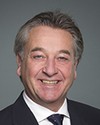Traditionally, Moldova has exported to the east. In terms of major products, Moldova has always been regarded as an orchard of the Soviet Union. One of the biggest industries is the agriculture and food industry. In Moldova we grow and produce organic fruit and vegetables. We have beautiful wines because our soils are very fit for the purpose. We grow very good quality grapes.
Besides, we understand that being an agricultural country you are always vulnerable to the climate conditions, especially today when we see these huge climate changes.
Moldova has developed today a very strong IT sector and we provide software for big international companies such as Microsoft. Great Britain imports software from Moldova; it is the biggest buyer of our IT products.
We also develop the industries that produce cables for cars. We provide cables for BMW and Volkswagen. This activity is being developed within the nine free economic zones where we offer very good fiscal incentives for the countries or businesses that wish to operate on Moldovan territory.
Today we have the biggest German companies, such as Dräxlmaier, operating in Moldova, producing these car cables. We have two Japanese companies that created thousands of new jobs that are helping keep the Moldovan population, especially the young population, in Moldova, so they stay rather than leave the country. Unfortunately, almost one million people, out of a population of 4.5 million, have left the country in search of jobs.
What those big international companies are doing is creating jobs, and people stay in Moldova. While the process is still far from being resolved, this is where we see our future, the IT industry production sector, and the agriculture and food industry will stay, of course, because we have the most fertile soils in Europe. In Moldova, it's almost 90% black soil, called chernozem. That is where we see ourselves right now.
By the way, I started telling you that we used to export traditionally to the eastern market. Today, 67% of our exports go to the European Union.
Regarding the composition of the population, it is very similar to what we see today in Transnistria. The major population, the biggest ethnic group, is, of course, Moldovans. Then come Ukrainians. Roughly 70% of the population is Moldovan, and then we have the Ukrainians, Russians, and a small minority called Gagauz, which is a Turkic-speaking population but very tiny. It's 0.3% of the population.




